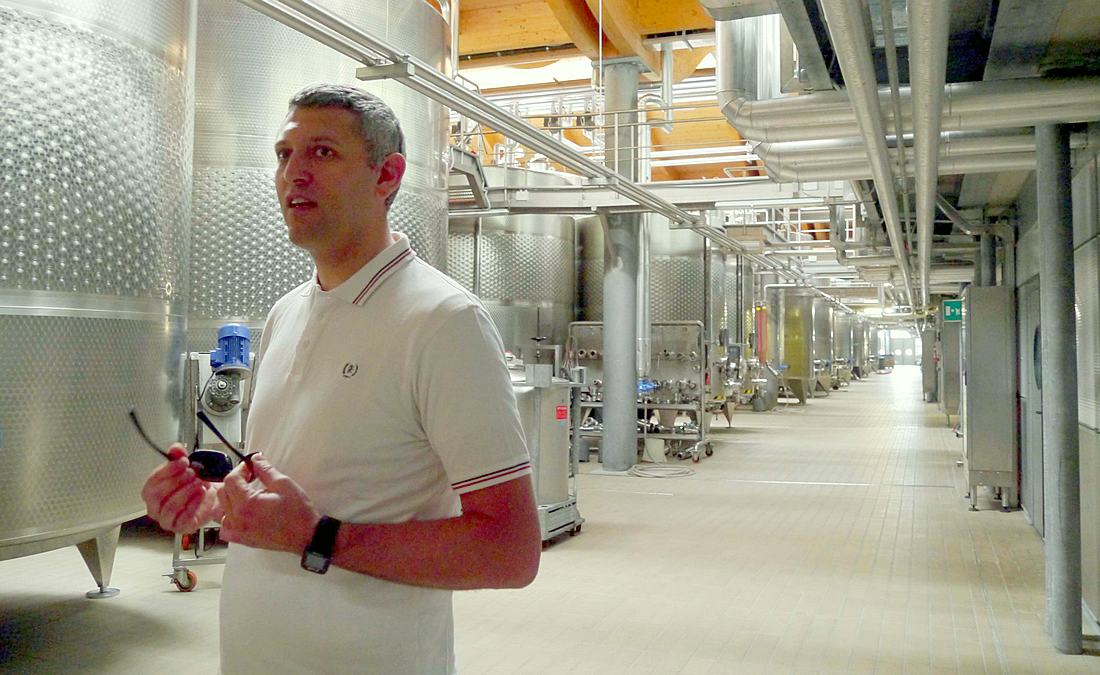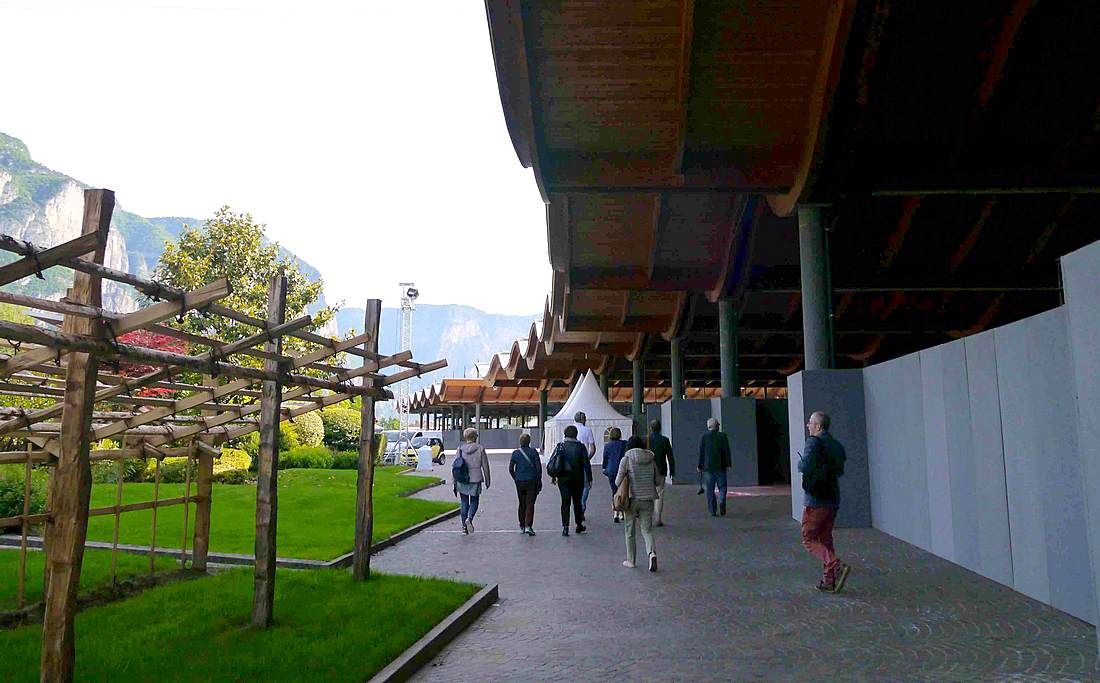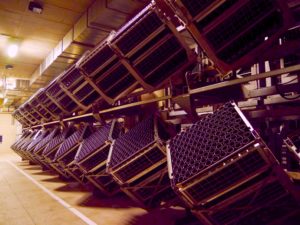
Not all Trentino wine producers are modest family affairs. Established in 1904, the Mezzacorona cooperative (www.mezzacorona.it/en-us) comprises 1,600 members. Their vineyards stretch across 3,000 hectares (about 11.6 square miles). They grow a third of the grapes in Trento province—about 30,000 tons per year. And they make surprisingly good wine.
Three-quarters of the grapes grown by Mezzacorona members are white. The most important are pinot grigio and chardonnay. Mezzacorona pinot grigio is certainly well-known in the U.S. and Germany, where it is a nationwide top seller in both countries. Wine Enthusiast magazine gave the 2014 a score of 87 and rated it a “best buy.” Annual production reaches about 50 million bottles. In the U.S., it sells for as little as $8 at a discount wine supermarket to $12 at a convenience store.
According to winemaker Mateo Covazzi (above), 2014 was a very challenging year. The cooperative had to lower its ripeness standards for the members, as late rains put a literal damper on the harvest. But Covazzi and his winemaking colleagues work with truly state-of-the-art tools and equipment. Pinot grigio is the flagship of the cooperative, so it must be consistent from year to year. Drinking the 2013 and 2014 side by side in a blind tasting, I detected a little more acid and fewer floral notes in the 2014. Otherwise, I found it hard to tell the two vintages apart.
Sparkling wines carry Rotari label
 The sheer size of the Mezzacorona facility is hard to fathom. It is several wineries under one undulating roof at the edge of town in the shadow of the Alps. Built of local wood, the roof echoes the structure of the pergolas traditional in local vineyards. In addition to varietal still wines—pinot grigio, chardonnay, cabernet sauvignon, merlot, pinot nero, and moscato—the same company also makes 2.5 million bottles of sparkling wine under the Rotari label. (The cooperative also makes and bottles smaller amounts of other varietals for local consumption.)
The sheer size of the Mezzacorona facility is hard to fathom. It is several wineries under one undulating roof at the edge of town in the shadow of the Alps. Built of local wood, the roof echoes the structure of the pergolas traditional in local vineyards. In addition to varietal still wines—pinot grigio, chardonnay, cabernet sauvignon, merlot, pinot nero, and moscato—the same company also makes 2.5 million bottles of sparkling wine under the Rotari label. (The cooperative also makes and bottles smaller amounts of other varietals for local consumption.)
 Mezzacorona sorts its grapes carefully, grading them for their final use. The best of the chardonnay grapes are reserved for Rotari sparkling wines. The sparkling wines spend a minimum of 20 months on the lees. Riservas sit on the lees for three to four years, flagship wines for six years or more. Although production of sparkling wines is more fragmented than the still wines, the volume of production permits some considerable economies of scale—like the 360-bottle riddling cages shown here. The standard Rotari Brut is comparable to a good entry-level Champagne. At $12-$16, it is half the cost.
Mezzacorona sorts its grapes carefully, grading them for their final use. The best of the chardonnay grapes are reserved for Rotari sparkling wines. The sparkling wines spend a minimum of 20 months on the lees. Riservas sit on the lees for three to four years, flagship wines for six years or more. Although production of sparkling wines is more fragmented than the still wines, the volume of production permits some considerable economies of scale—like the 360-bottle riddling cages shown here. The standard Rotari Brut is comparable to a good entry-level Champagne. At $12-$16, it is half the cost.
Mezzacorona offers guided tours and tastings Monday-Saturday 8:30am–12:30 pm and 2–6pm. Call for an appointment. The Cittadella del Vino (“Citadel of Wine”), as the company calls its new cutting-edge facility, is 300 meters off the A22 at Via del Teroldego, 1/E in Mezzocorona; tel. +39 0461 616 399; www.mezzacorona.it.
